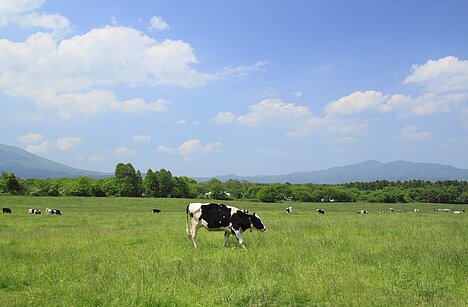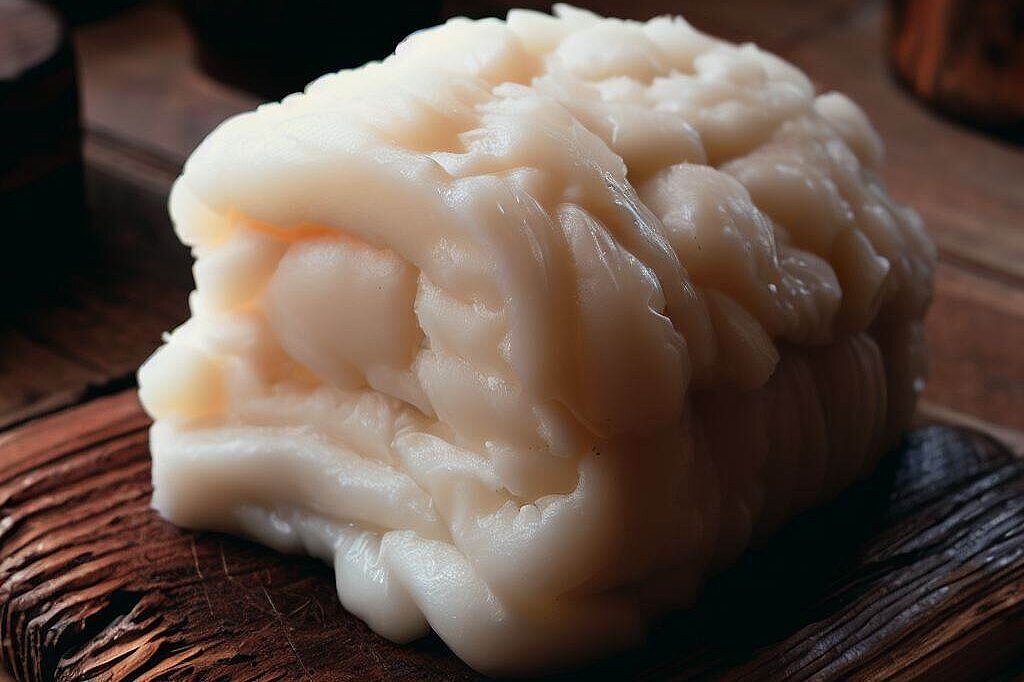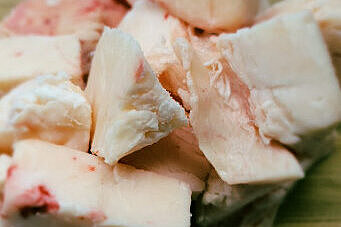Beef tallow

Beef tallow is an animal fat obtained from the fatty tissue of cattle. It has a firm consistency and a high content of saturated fatty acids. Beef tallow is often used as an ingredient in dog food or as a supplement for barfing. But what are the advantages and disadvantages of beef tallow for dogs? In this article, you can find out more about this fat and how you can feed it to your dog.
What is beef tallow?
Beef tallow is the fat that is extracted from the fatty tissue of cattle. It is usually obtained by heating or rendering the fat, whereby the liquid and solid components are separated. The solid fat is called beef tallow, the liquid fat is called lard.
Beef tallow has a high melting point and a long shelf life. It is often used as an ingredient in the food industry, for example for baked goods, chocolate or margarine. Beef tallow is also used in cosmetics and soap production.
Why is beef tallow used for dogs?
Beef tallow is used for dogs for various reasons. Firstly, it is a natural source of animal fat, which is essential for a dog's health. Animal fat provides energy, satiates the dog and supplies it with essential fatty acids that it cannot produce itself.
On the other hand, beef tallow can help to increase the fat content of meals when barfing. Barfing means feeding the dog raw meat and other ingredients that correspond to its natural prey. The dog should consume at least 15% fat per day from the animal portion of the total portion. If the meat is too lean, beef tallow can be used as a supplement.
What are the benefits of beef tallow for dogs?
Beef tallow has several benefits for dogs, which are as follows:
- Energy: beef tallow provides more than twice as much energy as carbohydrates or proteins (proteins). This is especially important for active or working dogs that have a high energy requirement.
- Satiety: Beef tallow ensures that the dog feels full faster and for longer. This can help dogs that are too hungry or eat too quickly.
- Essential fatty acids: Beef tallow contains essential fatty acids such as linoleic acid (omega-6) and arachidonic acid (omega-6), which dogs cannot produce themselves. These fatty acids are important for the dog's skin, coat and immune function.
- Taste: Beef tallow has an intense taste that many dogs like. This can help picky dogs or dogs with poor appetites to accept the food better.
What are the disadvantages of suet for dogs?
Beef tallow also has some disadvantages for dogs, which are as follows:
- Obesity: beef tallow has a high calorie content and can lead to obesity if given in excessive doses. Obesity is a risk factor for various diseases such as diabetes, osteoarthritis or cardiovascular problems.
- Digestive problems: Beef tallow can cause digestive problems such as diarrhea, flatulence or abdominal pain in some dogs. This is because the dog first has to get used to larger amounts of fat or because it has an intolerance.
- Inflammation: Beef tallow has a high content of saturated fatty acids and a low content of unsaturated fatty acids. This can lead to an imbalance in the ratio of omega-6 to omega-3 fatty acids, which can promote inflammation in the body. Inflammation is a trigger for many chronic diseases such as allergies, skin problems or joint pain.
How can beef tallow be fed to dogs?
Beef tallow can be fed to dogs in various ways. The most common are:
- As an ingredient in dog food: Beef tallow is often used as an ingredient in commercial dog food to increase the fat content and flavor. You should pay attention to the quality and origin of the beef tallow, as it can also be contaminated with harmful substances or hormones. You should also follow the manufacturer's feeding recommendations to avoid overdosing.
- As a supplement for barfing: Beef tallow can be used as a supplement when barfing to increase the fat content of meals. Care should be taken to ensure that the dog does not get too much fat, as this can lead to obesity or digestive problems. A rule of thumb is that the dog should consume at least 15% fat from the animal portion of the total portion every day. If the meat already contains enough fat, there is no need to add beef tallow.
- As a treat or reward: Beef tallow can also be used as a treat or reward for the dog, for example in the form of dried pieces of tallow or tallow bones. Care should be taken to ensure that the dog does not get too much of it, as this can lead to obesity or digestive problems. You should also make sure that the dog chews the tallow well and does not swallow it, as this can lead to choking.
Beef tallow is an animal fat obtained from the fatty tissue of cattle. It has a firm consistency and a high content of saturated fatty acids. Beef tallow is often used as an ingredient in dog food or as a supplement in barfing. It has some benefits for dogs, such as energy, satiety, essential fatty acids and taste. However, it also has some disadvantages for dogs, such as obesity, digestive problems and inflammation. Therefore, beef tallow for dogs should only be fed in moderation and attention should be paid to the quality and origin of the beef tallow.
If you notice any signs of hypersensitivity or poisoning in your dog, you should see your vet immediately. We are not a substitute for a vet, but we try to be as accurate as possible. Every dog reacts differently and we recommend you get a second opinion or consult your vet if in doubt.
Stay healthy and take good care of your four-legged friend!😊
Similar to Beef tallow
Buffalo fat is a saturated fat with a high proportion of lauric acid. Lauric acid is a fatty acid with antibacterial and antiviral properties. It can strengthen the dog's immune system and protect...
Duck fat has several benefits for dogs that can make it a good addition to their diet. For one, duck fat can promote skin and coat health as it supports the formation of skin cells and hair. In...
Beef fat is the fatty tissue from cattle that is produced during slaughter. It contains mainly saturated fatty acids, which have a high energy density and can quickly give the dog strength and...
Animal fat comes from the tissue of mammals, poultry and fish. It consists mainly of saturated fatty acids, which are easier for dogs to digest than vegetable fats. Animal fats also contain...



